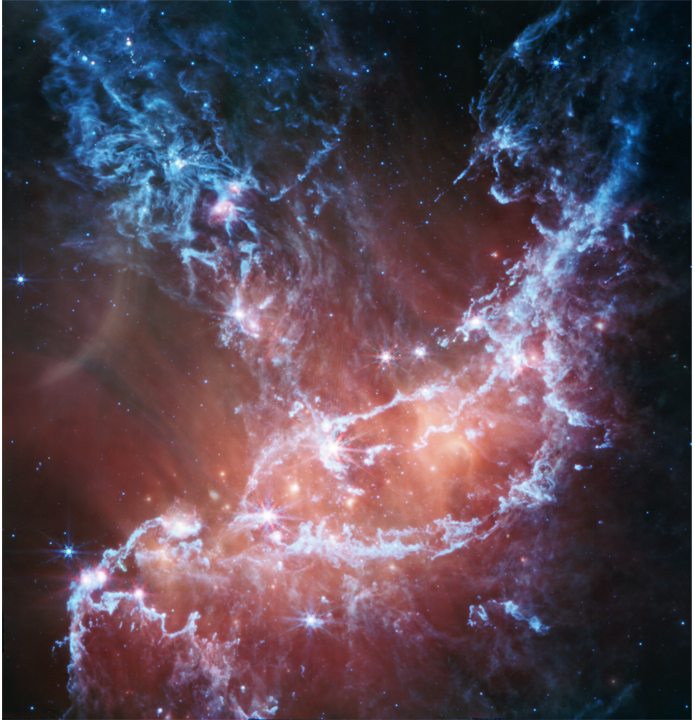The spectacular area of star birth NGC 346 is located inside the Small Magellanic Cloud (SMC), a nearby dwarf galaxy. The SMC’s brightest and the greatest star-forming zone has received extensive study from a range of telescopes. Thousands of stars might be seen in the visible light from NASA’s Hubble Space Telescope. More recently, the near-infrared view provided by NASA’s James Webb Space Telescope highlighted both warm and cool dust.

NGC 346 (MIRI Image). Image Credit: Webb Space Telescope
Now that Webb has focused on NGC 346 in the mid-infrared, streamers of gas and dust are visible, along with brilliant regions that are home to young stars.
The James Webb Space Telescope, operated by NASA, excels in providing astronomers with in-depth images of regions where new stars are forming. The newest example is NGC 346, the brightest and largest star-forming area in the Small Magellanic Cloud.
The Milky Way’s Small Magellanic Cloud (SMC) can be seen with the unassisted eye in the southern constellation Tucana. In comparison to the Milky Way, this small companion galaxy is more primitive because it contains fewer heavy metals, which are created in stars through nuclear fusion and supernova explosions.
Scientists anticipated the SMC to be devoid of considerable amounts of dust since cosmic dust is composed of heavy elements like silicon and oxygen. However, both the recent MIRI image and an earlier view of NGC 346 from Webb’s Near-Infrared Camera published in January demonstrate that this region contains a lot of dust.
This representative-color image shows the emission of sooty chemical compounds called polycyclic aromatic hydrocarbons, or PAHs, as well as dusty silicates. Warm dust heated by the most massive and brightest stars in the region’s center emits more diffuse red emission. A star at the arc’s center could be reflected in an arc in the center left of the image. (Stars at the bottom left and top right appear to be accompanied by similar, fainter arcs.)
Finally, brilliant spots and filaments indicate regions where protostars are present in large numbers. In their hunt for the reddest stars, the study team discovered 1,001 small pinpoint sources of light, the majority of which were young stars still enclosed in their dusty nebulae.
The near-infrared and mid-infrared data from Webb could be used to provide a more comprehensive census of the stars and protostars in this active area. The findings have repercussions for our comprehension of galaxies that existed billions of years ago, at a time in the universe known as “cosmic noon,” when star formation was at its height, and heavy element concentrations were lower, as observed in the SMC.